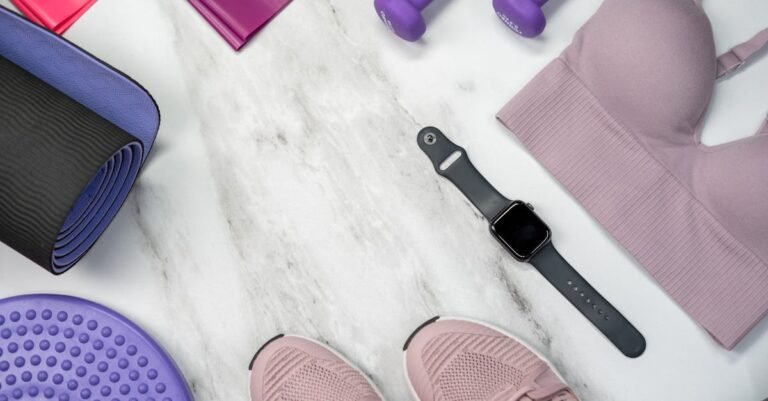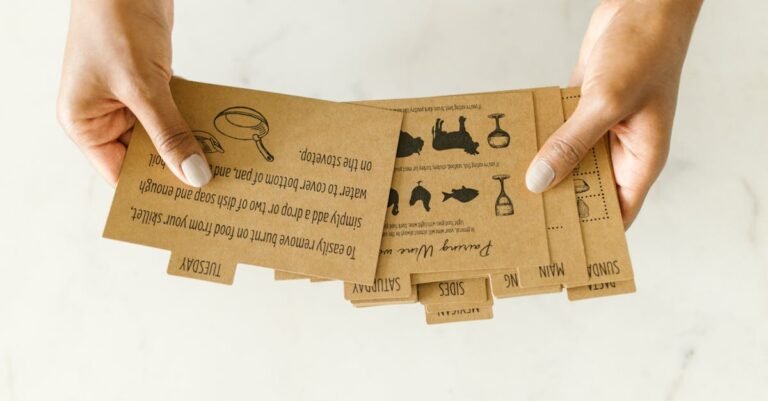Table of Contents
- Track Your Fitness Progress Effectively
- Why Bother Tracking Your Fitness Progress Anyway?
- Setting the Stage: Before You Start Tracking
- The Nitty Gritty: Methods for Tracking Progress
- Consistency is Key: Making Tracking a Habit
- Analyzing Your Data: Turning Numbers into Action
- Common Pitfalls and How to Avoid Them
- Conclusion: Your Fitness Journey, Your Data Story
- Frequently Asked Questions (FAQs)
Track Your Fitness Progress Effectively
So, you’ve decided to embark on a fitness journey. Maybe you want to lose weight, build muscle, run a marathon, or simply feel healthier and more energetic. Whatever your reason, congratulations! Taking that first step is huge. But how do you know if you’re actually making progress? How do you stay motivated when the initial excitement wears off? The answer, my friend, lies in tracking your progress effectively.
Think of it like driving to a new destination. You wouldn’t just hop in the car and hope for the best, right? You’d use a map or GPS to see where you are, where you’re going, and if you’re heading in the right direction. Tracking your fitness progress is your personal fitness GPS. It guides you, keeps you on course, and shows you just how far you’ve travelled.
Why Bother Tracking Your Fitness Progress Anyway?
Okay, let’s be real. Tracking might seem like another chore on your already packed to do list. “Can’t I just work out and hope for the best?” you might ask. Well, you could, but you’d be missing out on some serious benefits. Tracking isn’t just about numbers; it’s about understanding your body and optimizing your journey.
Motivation Fuel: Seeing How Far You’ve Come
Remember that feeling when you first started? Maybe you could barely run for five minutes or lift a certain weight. Tracking allows you to look back and see tangible proof of your improvement. Seeing that you can now run for twenty minutes straight or lift significantly more weight is incredibly motivating! It’s like getting little gold stars along the way. This visual evidence reinforces your efforts and makes you want to keep pushing forward, especially on days when motivation is lagging. It turns abstract goals into concrete achievements.
Identifying Plateaus: When Progress Stalls
It happens to everyone. You’re cruising along, seeing results, and then…bam. Progress seems to grind to a halt. This is called a plateau, and it can be incredibly frustrating if you’re not tracking. Without data, you might just feel like you’re failing. But with tracking, you can pinpoint exactly when the plateau started and look at your logs. Did your workout intensity decrease? Did your nutrition slip? Did you change your routine? Tracking provides the clues needed to diagnose the problem and figure out what needs tweaking.
Making Adjustments: Smarter Training, Not Just Harder
Tracking isn’t just about looking back; it’s about planning forward. The data you collect provides invaluable insights into what’s working and what’s not. Maybe you notice that you make better strength gains when you focus on compound lifts, or perhaps your running pace improves more when you incorporate interval training. This information allows you to make informed decisions and adjust your training plan or nutrition strategy for better results. It helps you work smarter, tailoring your approach based on your body’s unique response, rather than just blindly working harder and hoping for the best.
Setting the Stage: Before You Start Tracking
Before you dive headfirst into logging every calorie and rep, let’s lay some groundwork. Effective tracking starts with clarity and a solid baseline.
Define Your Goals: What Does “Fit” Mean to You?
What are you actually trying to achieve? “Getting fit” is too vague. Do you want to lose 10 pounds? Run a 5k without stopping? Increase your bench press by 20 pounds? Be specific! Your goals will determine what you need to track. If your goal is weight loss, tracking weight and body measurements makes sense. If it’s strength gain, tracking sets, reps, and weight lifted is crucial. If it’s endurance, tracking distance, time, and pace is key. Defining your specific destination tells your fitness GPS where to navigate.
SMART Goals: The Secret Sauce
Ever heard of SMART goals? It’s a fantastic framework for setting yourself up for success. Make your goals:
- Specific: Clearly defined (e.g., “Run 3 miles continuously” instead of “Run more”).
- Measurable: Quantifiable, so you know when you’ve achieved it (e.g., “Lose 1 inch off my waist”). How will you track it?
- Achievable: Realistic given your current fitness level, time, and resources. Aim high, but don’t set yourself up for failure.
- Relevant: Aligned with your overall fitness aspirations and why you started this journey. Does it truly matter to you?
- Time bound: Set a target date or timeframe (e.g., “Achieve this goal in 12 weeks”). This creates urgency and a clear deadline.
Setting SMART goals transforms vague wishes into actionable plans and makes tracking much more purposeful.
Choose Your Starting Point: Establishing Baselines
How can you know how far you’ve come if you don’t know where you started? Before you begin your new routine or tracking method, take baseline measurements. This could include:
- Your current weight
- Body measurements (waist, hips, chest, arms, thighs)
- “Before” photos (front, side, back)
- Fitness test results (e.g., how many push ups you can do, how long it takes to run a mile, your one rep max for key lifts)
- How you feel generally (energy levels, sleep quality, mood)
Record these initial stats honestly. This starting point is crucial for accurately measuring your progress down the line. Don’t be discouraged by your starting numbers; they are just data points on the map of your journey.
The Nitty Gritty: Methods for Tracking Progress
Alright, goals are set, baselines are recorded. Now, how do you actually track? There are tons of options, from simple pen and paper to sophisticated tech. The best method is the one you’ll actually stick with!
The Old School Charm: Pen and Paper Journals
Never underestimate the power of a simple notebook and pen! A dedicated fitness journal can be incredibly effective. You can customize it exactly how you like, logging workouts (exercises, sets, reps, weight), cardio sessions (duration, distance, intensity), food intake, measurements, and even how you felt during your workout. There’s something satisfying about physically writing things down. It requires mindfulness and can help solidify your commitment. Plus, no batteries required, and it won’t distract you with notifications!
Tech to the Rescue: Fitness Apps and Wearables
We live in a digital age, and fitness tech offers powerful tracking tools. Apps and wearables can automate much of the tracking process, provide detailed analytics, and offer reminders and motivation.
Popular Apps and Their Features
There’s an app for practically everything fitness related. Popular choices like MyFitnessPal, Strava, StrongLifts 5×5, Nike Training Club, and Fitbod offer features such as:
- Workout logging (with extensive exercise libraries)
- GPS tracking for runs and cycles
- Calorie and macronutrient tracking
- Progress charts and graphs
- Social features and challenges
- Integration with wearable devices
Explore different apps to find one whose interface and features align with your goals and preferences. Many offer free versions with optional premium upgrades.
Wearable Wonders: Smartwatches & Fitness Bands
Devices like Fitbit, Apple Watch, Garmin, and WHOOP track metrics passively throughout the day and during workouts. They can monitor:
- Steps taken and distance covered
- Heart rate (resting and during exercise)
- Calories burned
- Sleep quality and duration
- Specific workout types
- Some even estimate VO2 max or heart rate variability (HRV)
Wearables provide a constant stream of data, making it easy to see daily activity levels and workout intensity. They often sync seamlessly with companion apps for detailed analysis.
Beyond the Scale: Alternative Progress Metrics
While the scale can be a useful tool, it doesn’t tell the whole story. Your weight can fluctuate daily due to water retention, muscle gain (which weighs more than fat by volume), and other factors. Relying solely on the scale can be misleading and demoralizing. Diversify your tracking!
Body Measurements: Tape Measure Triumphs
A simple tape measure can be more revealing than the scale, especially if your goal involves changing body composition (losing fat and gaining muscle). Muscle is denser than fat, so you might lose inches even if your weight stays the same or increases slightly. Measure key areas like your waist, hips, chest, arms, and thighs consistently (e.g., once every 2 to 4 weeks) under the same conditions (e.g., first thing in the morning).
Progress Photos: A Picture’s Worth a Thousand Reps
This might feel awkward at first, but progress photos are incredibly powerful. Take pictures from the front, side, and back in the same lighting, wearing similar clothing (or swimwear/underwear), and at regular intervals (e.g., monthly). You see yourself every day, so gradual changes are hard to notice. Comparing photos side by side can reveal stunning transformations that numbers alone might miss.
Performance Metrics: Lifting Heavier, Running Faster
How are your workouts improving? Are you able to:
- Lift heavier weights?
- Complete more repetitions or sets?
- Run or cycle faster or further?
- Reduce your rest times between sets?
- Perform exercises with better form?
Tracking these performance improvements is a fantastic way to gauge increased strength, endurance, and skill. This is often where you’ll see progress even when the scale or tape measure isn’t moving much.
How You Feel: Subjective Measures Matter Too!
Don’t discount the qualitative data! How do you feel? Are you:
- Sleeping better?
- Having more energy throughout the day?
- Feeling less stressed?
- Noticing clothes fit differently?
- Feeling stronger and more capable in daily activities?
- Experiencing fewer aches and pains?
Jot down notes about your energy levels, mood, sleep quality, and overall well being in your journal or app. These subjective improvements are huge wins and vital signs of progress.
Consistency is Key: Making Tracking a Habit
Choosing your methods is one thing; sticking with them is another. Like exercise itself, tracking requires consistency to be effective.
Schedule It In: Treat It Like a Workout
Don’t leave tracking to chance. Decide when and how often you’ll track specific metrics. Log your workouts immediately after finishing. Weigh yourself at the same time under the same conditions (e.g., Wednesday mornings before breakfast). Schedule time each week or month to take measurements and photos. Making it part of your routine significantly increases the likelihood you’ll stick with it.
Keep It Simple: Don’t Overcomplicate Things
It’s easy to get overwhelmed trying to track every single metric possible. Start small. Choose the 2 3 metrics most relevant to your primary goal. If you’re using an app, focus on its core features first. If you’re using a journal, create a simple template. You can always add more metrics later once tracking becomes a habit. The goal is sustainable tracking, not data overload.
Analyzing Your Data: Turning Numbers into Action
Collecting data is pointless if you don’t use it. Regularly review your logs to understand your progress and make informed decisions.
Look for Trends, Not Just Daily Fluctuations
Don’t panic over a single high weigh in or a slightly slower run time. Day to day fluctuations are normal! Look for overall trends over weeks and months. Are your measurements generally decreasing? Is your average running pace improving? Are your strength numbers consistently going up? Focus on the bigger picture. Charts and graphs in apps can be really helpful for visualizing these trends.
Celebrate Milestones (Big and Small!)
Tracking helps you identify when you hit milestones – losing those first 5 pounds, running your first non stop mile, adding 10 pounds to your squat, fitting into old jeans. Acknowledge and celebrate these victories! This positive reinforcement keeps motivation high and makes the journey more enjoyable. Reward yourself (in a healthy way, of course!) for hitting significant goals.
Common Pitfalls and How to Avoid Them
While tracking is beneficial, it’s not without potential downsides. Be mindful of these common traps.
Obsessing Over Numbers
It’s easy to become fixated on the numbers – the scale, the calorie count, the workout stats. Remember that these are just tools, not the ultimate measure of your worth or health. If you find yourself feeling anxious, guilty, or overly controlled by the numbers, take a step back. Focus more on subjective measures like how you feel or performance goals for a while. Fitness should enhance your life, not dominate it negatively.
Comparing Yourself to Others
Your fitness journey is unique to you. Your genetics, lifestyle, starting point, and goals are different from everyone else’s. While social features in apps can be motivating, avoid comparing your progress directly to others. It’s apples and oranges! Focus on your own journey and competing only against your past self. Celebrate others’ successes without letting them diminish your own accomplishments.
Giving Up When You Don’t See Instant Results
Meaningful fitness changes take time and consistency. You won’t see dramatic results overnight or even sometimes week to week. This is where tracking becomes so important – it can reveal subtle progress you might otherwise miss. Trust the process, stay consistent with your workouts and tracking, analyze your trends, make adjustments as needed, and be patient. Persistence pays off.
Conclusion: Your Fitness Journey, Your Data Story
Tracking your fitness progress is far more than just logging numbers; it’s about writing the story of your dedication, resilience, and transformation. It’s your personalized feedback system, your motivational tool, and your guide to smarter training. By setting clear goals, choosing tracking methods that work for you, focusing on multiple metrics beyond the scale, and being consistent, you empower yourself with the knowledge needed to navigate plateaus, celebrate victories, and ultimately reach your fitness destination. Remember to look at the trends, be patient with yourself, and focus on progress, not perfection. Your fitness journey is yours alone – use tracking to make it a successful and rewarding one!
Frequently Asked Questions (FAQs)
1. How often should I track my progress?
It depends on the metric! Log workouts immediately after completion. Weight can be tracked daily, weekly, or bi weekly (consistency is key – track at the same time/day). Measurements and progress photos are typically best taken every 2 4 weeks to see noticeable changes. Performance metrics are tracked during each relevant workout. Listen to your body and adjust frequency based on what keeps you motivated without causing obsession.
2. What are the most important things to track for weight loss?
For weight loss, a combination is best: 1. Body Weight: Tracked consistently (e.g., weekly) to see overall trends. 2. Body Measurements: (Waist, hips, etc.) Tracked every 2 4 weeks, as you might lose inches even if the scale doesn’t move much due to muscle gain. 3. Progress Photos: Monthly photos provide visual evidence of change. 4. Calorie/Food Intake: Tracking intake (at least initially) helps understand eating habits and ensure a calorie deficit. 5. How Clothes Fit: A practical, real world indicator!
3. I gained weight even though I’m working out and eating well. Why?
Don’t panic! This is common, especially when starting strength training. Reasons include: 1. Muscle Gain: Muscle is denser than fat, so building muscle can increase weight even as you lose fat and inches. 2. Water Retention: New exercise routines can cause temporary inflammation and water retention as muscles repair. Hormonal fluctuations and dietary changes (like increased carbs or sodium) can also cause water weight gain. Focus on other metrics like measurements, photos, and performance.
4. Can I track my fitness progress without any apps or gadgets?
Absolutely! A simple pen and notebook (a fitness journal) is a highly effective tool. You can manually log your workouts (exercises, sets, reps, weight), cardio sessions (duration, distance, perceived effort), body measurements taken with a tape measure, your weight from a regular scale, and notes on how you feel. Progress photos only require a camera (even your phone’s). Technology can add convenience and analytics, but it’s definitely not essential.
5. What should I do if tracking starts making me feel anxious or obsessed?
If tracking negatively impacts your mental health, it’s crucial to adjust your approach. Try: 1. Reduce Tracking Frequency: Weigh yourself less often, take measurements monthly instead of weekly. 2. Shift Focus: Concentrate on performance goals (lifting heavier, running faster) or subjective feelings (energy levels, sleep) instead of aesthetic numbers. 3. Take a Break: Step away from detailed tracking for a period and focus on enjoying movement and intuitive eating. 4. Simplify: Track only one or two key metrics that feel less triggering. Remember, tracking is a tool to support your journey, not control your life.










